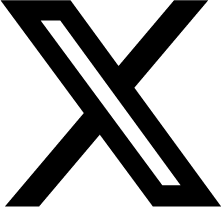April 2018
Computer programs are works consisting of a combination of instructions which cause computer hardwire to directly or indirectly produce specific results; the ultimate objectives or functions of suchworks are ideas and thus fall beyond the scope of copyright protection (Taiwan)
2017.12.13
Ankwei Chen
The Supreme Court rendered the 106-Tai-Shang-1726 Civil Decision on December 13, 2017 (the "Decision") in which it held that that computer programs are works consisting of a combination of instructions which cause computer hardwire to directly or indirectly produce specific results, so the ultimate objectives or functions of suchworks are ideas and are thus not protectable by copyright.
In this case, the Plaintiff filed a complaint asserting that it holds the copyright to the the DELPHI version of an account receivable operating system, and that it has subsequently developed a .NET version of the same ("Software A"). The system is designed with a low level core architecture and developer tool programs to address different customer needs on a real-time basis and rapidly develop applications. As such, it was an important core of Software A. The Defendant was a former employee who had set up another company and poached the developers and project manager of such software before being awarded a contract in the procurement project at issue to deploy such account receivable operating system (“Software B”). The Plaintiff asserts that the source code, user interfaces and operating manual of Software B plagiarized Software A and its operating manual, thereby infringing on the Plaintiff's copyright, and the Plaintiff seeks damages for NT$10 million. The lower court only awarded NT$1 million damages to the Plaintiff with all other claims rejected. The Plaintiff thus appealed.
The Decision states that with respect to the operating manual of Software B, the expression of parts that are not the critical or core parts of the operating manual, or mere expressions of fact, fall within the principle of the merger of idea and expression; further, the general low level of creativity and about a 15% means that it is still within the scope of fair use. As such, there is no infringement of the Plaintiff-Appellant’s copyright. In addition, although the Defendant had a reasonable opportunity to come into contact with the software, since it is not possible to make a complete comparative analysis between Software A and Software B in the original operating environment but only among 167 programs with similar naming conventions, even if an abstract comparative analysis shows a possibility of plagiarizing expressions in Software A, the plagiarized portions still only accounted for a very low percentage. In consideration of the state of the infringing conduct and how a and the decrease in software sales is not solely attributable to copyright infringement, the Decision found that the Defendant is unlikely to have willfully infringed Software A and the infringement was not material, hence damages in the amount of NT$1 million was appropriate, and there was no error in ruling rejecting the rest of the claims. As for whether the plagiarized portions of Software A were fundamental or essential to the ultimate objectives or functions of the account receivable operating system, since this pertains to the appraisal of the ideas of the work and has no direct relationship with the determination of computer program infringement, ithas no bearing on the outcome of the decision.
Ankwei Chen
The Supreme Court rendered the 106-Tai-Shang-1726 Civil Decision on December 13, 2017 (the "Decision") in which it held that that computer programs are works consisting of a combination of instructions which cause computer hardwire to directly or indirectly produce specific results, so the ultimate objectives or functions of suchworks are ideas and are thus not protectable by copyright.
In this case, the Plaintiff filed a complaint asserting that it holds the copyright to the the DELPHI version of an account receivable operating system, and that it has subsequently developed a .NET version of the same ("Software A"). The system is designed with a low level core architecture and developer tool programs to address different customer needs on a real-time basis and rapidly develop applications. As such, it was an important core of Software A. The Defendant was a former employee who had set up another company and poached the developers and project manager of such software before being awarded a contract in the procurement project at issue to deploy such account receivable operating system (“Software B”). The Plaintiff asserts that the source code, user interfaces and operating manual of Software B plagiarized Software A and its operating manual, thereby infringing on the Plaintiff's copyright, and the Plaintiff seeks damages for NT$10 million. The lower court only awarded NT$1 million damages to the Plaintiff with all other claims rejected. The Plaintiff thus appealed.
The Decision states that with respect to the operating manual of Software B, the expression of parts that are not the critical or core parts of the operating manual, or mere expressions of fact, fall within the principle of the merger of idea and expression; further, the general low level of creativity and about a 15% means that it is still within the scope of fair use. As such, there is no infringement of the Plaintiff-Appellant’s copyright. In addition, although the Defendant had a reasonable opportunity to come into contact with the software, since it is not possible to make a complete comparative analysis between Software A and Software B in the original operating environment but only among 167 programs with similar naming conventions, even if an abstract comparative analysis shows a possibility of plagiarizing expressions in Software A, the plagiarized portions still only accounted for a very low percentage. In consideration of the state of the infringing conduct and how a and the decrease in software sales is not solely attributable to copyright infringement, the Decision found that the Defendant is unlikely to have willfully infringed Software A and the infringement was not material, hence damages in the amount of NT$1 million was appropriate, and there was no error in ruling rejecting the rest of the claims. As for whether the plagiarized portions of Software A were fundamental or essential to the ultimate objectives or functions of the account receivable operating system, since this pertains to the appraisal of the ideas of the work and has no direct relationship with the determination of computer program infringement, ithas no bearing on the outcome of the decision.


